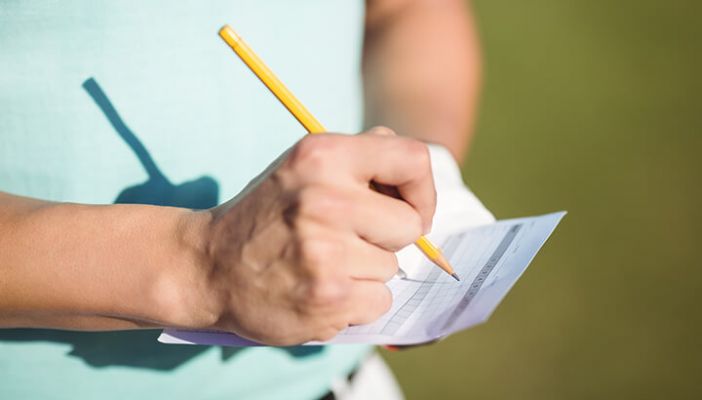Preparation for playing a round of golf can be separated into long, mid and short-term data needs and actions. Some of your long to mid-term needs might include investigating the club you are playing and their associated protocols, including dress codes, green fees, how to get there (so you arrive with plenty of time), and practice and locker room facilities.
A week from your booking date, check your handicap and, if appropriate, check the slope rating of the course so that you have an indication of what handicap will be applicable for the day. Seek information on the format: what event are you playing and if you are unsure of the scoring format then get your head around that as soon as you arrive at the club. Check with the pro-shop or your playing partners. A 4BBB match-play event can be conceded if you don’t know what you are doing with the card! This should be researched long before you pack your clubs into the trunk.
With this background information “under your belt,” here are the five things to do immediately prior to stepping onto the 1st tee:
1. Card and pencil
I’d be rich already if I got a buck each time that golfers in a group were about to pull off the 1st and someone realizes they forgot to grab a course card. Or, more commonly, they can’t find a single pencil in their bag. Most golf courses around the world — from the scrawniest goat track (where you pop your green fees in a box by the gate) to the most exclusive country club — make free, sharpened pencils available. No excuse!
If the course is unfamiliar to you, then study the card for the general layout — and where you have your shot holes. Is there a sequence of long holes that appear difficult (a.k.a. The Bear Trap)? You wouldn’t go walking off into the woods for 7km without checking the map and planning a route, so why turn up to an unfamiliar golf course and step out without analyzing available card data? It will give you some insight of what lies ahead. After determining the match format and shots, circle your shot holes on the card, keeping an extra card if necessary as a reminder.
2. Practice putt
This is absolutely essential. Even if you only get a few putts before teeing off, at least you will create a muscle memory of the pace and surface prior. Make a mental checklist of the green characteristics to take with you on the course — speed uphill, downhill, wind effect and surface texture. If given a choice for your game, stay on the putting green right up until you’re called to the 1st tee. That way, you can avoid unnecessary chatter and remain focused on adapting your putting stroke to the local conditions.
3. Water
Notwithstanding the possible drinks cart, corporate icebox filled with Buds or halfway house, don’t overlook the benefits of carrying fresh water. Keep a bottle in your bag and fill from the cooler immediately prior to starting. Ideally, this should be consumed by halfway, then refilled at the turn to do the same on your back nine. Dehydration sneaks up on you and it can impact on concentration and bring on shot fatigue. When you are flagging around the 14th-15th, as many folks seem to do, drink as much water as you can handle. Brain function, alertness, concentration and physical performance will appreciate that effort.
4. Bathroom
They say you should never walk past a bathroom unless you know exactly where the next one is! On many courses there simply is no “formal” bathroom, so do yourself a favor and check your bladder before stepping on the tee. Guys are blessed with some flexibility on course in the bathroom department but be warned — some courses and playing partners may take a dim view of on-course “relief.” Best to go prior to play.
5. Gear
The pros don’t need to worry too much about this, as their caddie and “team” are on the payroll to make sure the gear check is done. But we don’t have the luxury of such support and must take responsibility for our equipment.
Always select a number of balls for the day and place them in an external pocket or easy-to-reach spot in your bag. Mark up your balls immediately prior to playing, and take the lead by informing your playing partners at tee-time of your ball brand and markings. Try to keep these details the same, so that you never forget what ball you are playing with.
Mark up a different ball and write “P” on it. This is your provisional ball — ready to go — should you need it. It’s irritating when a playing partner pulls their drive and then provisional ball off into the bushes and the group stomping around looking for them aren’t sure what brand or markings are on the first or second ball.
Immediately prior to hitting off, you should have in your pocket: two long tees, two short tees, a pitch repairer, ball marker and your pencil. Have a spare battery for your rangefinder. Or, if distance tracking is from sprinkler heads, ask whether measurements are to the middle or front of greens.
Being organized before your round enables you to focus on the most important thing – your upcoming game!
— N. Incoll
